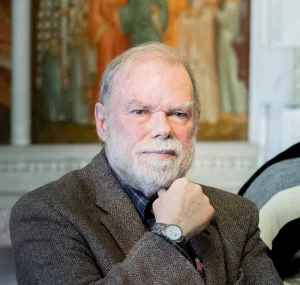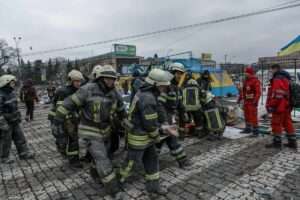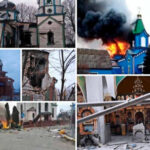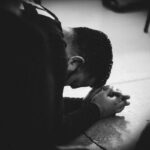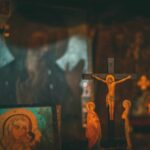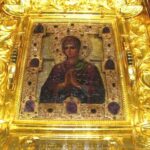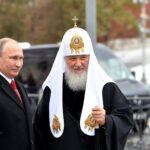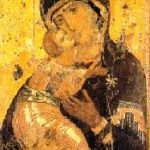News: Spring 2009
![]()
Albania urged to return religious property
Europe's association of Orthodox, Anglican and Protestant churches has called on Albania to return all religious property seized from religious communities during 46 years of Communist rule that followed the Second World War.
"Even after 18 years of democracy, much of the property confiscated under Communism still has to be returned to the churches and other religious communities," the Conference of European Churches said in a statement made public 11 February during a meeting in Tirana.
Archbishop Anastasios of Tirana and All Albania hosted the meeting. He came from Greece to Albania in 1992 to head the Orthodox Church of Albania and to help rebuild its life. Since then, more than 150 new churches have been built, 70 monasteries and historical monuments restored and 160 churches repaired. At the same time, the Orthodox church has initiated activities in the fields of health, education, social engagement, agricultural development, culture, environment and interfaith dialogue. There are now about 140 clergy serving the Church in Albania.
Albania declared itself "cleansed of religion" in 1967, under its communist leader Enver Hoxha, and declared "the world's first fully atheist state." All religious activity, even in homes, was strictly forbidden.
The church grouping's leaders welcomed the freedom of religion that now exists in Albania following the end of Communism in 1991. But they expressed concern about the failure of the authorities to return the property of religious communities. They urged the government to "reconsider, without delay, the return of all sacred places ... with all their associated land." [ENI]
Russian Orthodox Church and Vatican relations warm

Pope Benedict meeting Kirill before his election as Patriarch of the Russian Orthodox Church
Festivities in Rome in late May for the dedication of an Orthodox church, St. Catherine the Great Martyr, on the grounds of the Russian Embassy near the Vatican, attested to a marked warming of relations between the Russian Orthodox Church and the Vatican. If trends hold true, a meeting of the pope and the patriarch of the Orthodox Church in Russia may be close.
While in Rome, Orthodox clergy also conducted a service at San Clemente, one of Rome's most ancient churches.
Pope John Paul long dreamed of visiting Russia and mending relations with its Orthodox church, the world's largest, but he was never invited to Russia.
Relations have warmed since Patriarch Kirill's election as the new head of the Russian Orthodox Church.
In March, Pope Benedict XVI sent a message to a ceremony in Bari, Italy, where the Italian government handed back to Russia a church and pilgrimage center built in the czarist era. "How could we not recognize that this beautiful church awakens in us the nostalgia for full unity and maintains alive in us the commitment to work for union among all the disciples of Christ," he wrote.
As Metropolitan of Smolensk, in 2006 Kirill wrote the foreword to the first Russian-language edition of Pope Benedict's book Introduction to Christianity. "The traditionalism of Benedict XVI offers a profound view, a wise insight into the essence of things," Kirill wrote. "It is my deep conviction that this must be the approach of all Christians desiring to remain loyal to the never-aging Tradition of the Ancient Church in the face of the latest in a series of onslaughts of totalitarian relativism, which we are observing today."
Ironically, while shared theological values unite the new patriarch and Benedict, Kirill has been under attack by Orthodox fundamentalists in Russia, in part for an outgoing style and presence that more readily recall John Paul II.
Tensions between Moscow and some of the world's Orthodox churches are a stumbling block to relations with the Catholic Church. Moscow and Constantinople have been wrestling for centuries over jurisdictional issues, and with renewed vigor since the collapse of the Soviet Union.
The Moscow Patriarchate chafes especially when the Patriarch of Constantinople is described as the Orthodox pope. [Sophia Kishkovsky]
Afghan civilian deaths rose steeply in 2008

The number of civilians killed in Afghanistan leapt by nearly 40 percent in 2008, according to a United Nations survey released in February. It provides the latest objective measure of how the intensifying violence between the Taliban and American-led forces is ravaging that country.
The death toll 2,118 civilians killed in 2008, compared with 1,523 in 2007 is the highest since the Taliban government was ousted in November 2001, at the outset of a war.
The report found that the Taliban and other insurgents caused the majority of the civilian deaths, mainly through suicide bombers and roadside bombs, many aimed at killing as many civilians as possible.
But the report also found that Afghan government forces and those of the American-led coalition killed 828 people last year, up sharply from the previous year. Most of those were killed in airstrikes and raids on villages, which are often conducted at night.
Civilian deaths have eroded public support for the war and inflamed tensions with President Hamid Karzai, who has bitterly condemned the American-led coalition for their share of the rising toll.
An interview with Syed Mohammed, an elderly survivor of one raid, was published in February in The New York Times. Mr. Mohammed recalled how one day last September his son's family was wiped out in an American-led raid.
Mr. Mohammed said he was awakened in the early morning to the sound of gunfire and explosions. In a flash, Mr. Mohammed said, several American and Afghan soldiers kicked open the door of his home. The Americans, he said, had beards, an almost certain sign that they belonged to a unit of the Special Forces, which permits uniformed soldiers to grow facial hair.
"Who are you?" Mr. Mohammed recalled asking the intruders. "Shut up," came the reply from one of the Afghan soldiers. "We are the government." Mr. Mohammed said he was taken to a nearby base, interrogated for several hours, then let go as sunrise neared.
When he returned home, he went next door to his son's house, only to find that most of his family had been killed: the son, Nurallah, and his pregnant wife and two of his sons, Abdul Basit, age 1, and Mohammed, 2. Only Mr. Mohammed's 4-year-old grandson, Zarqawi, survived. "The soldiers had a right to search our house," Mr. Mohammed said. "But they didn't have a right to do this."
Bullet holes still pockmarked the Nurallah home more than four months after the attack, and the infant's cradle still hung from the ceiling. The day after the attack, a senior Afghan official came to the door and handed Mr. Mohammed $800.
The UN report also said the airstrikes that went awry were often those called in by troops under attack.
Under such circumstances, some of the normal rules may not apply. An American attack in the western Afghan village of Azizabad last August highlighted these tensions. An American AC-130 gunship struck a suspected Taliban compound, killing more than 90 people.
In May, approximately 140 civilians died in a single US bombing error. Bombs hit houses in two villages in western Farah province in which mostly women and children were hiding. There had been Taliban forces in the area, but survivors said they had left before the bombs were dropped.
A common date for Easter?
The hope that all Christians will celebrate Easter on the same day in the future was reaffirmed by an international ecumenical seminar in mid-May organized by the Institute of Ecumenical Studies at the Ukrainian Catholic University in Lviv.
The problem is nearly as old as the Church itself. As Christianity started to spread around the world, Christians came to differing results on when to commemorate Jesus Christ's death and resurrection, due to the different reports in the four gospels on these events.
Attempts to establish a common date for Easter began with the Council of Nicaea in the year 325. It established that the date of Easter would be the first Sunday after the full moon following the vernal equinox. However, it did not fix the methods to be used to calculate the timing of the full moon or the vernal equinox.
Nowadays the Orthodox churches use the 21st of March on the Julian calendar as the date of the equinox, while the churches of the Western tradition that is the Protestant and Catholic churches base their calculations on the Gregorian calendar. The resulting gap between the two Easter dates can be as much as five weeks.
All participants at the seminar, which included Orthodox, Catholic and Protestant theologians from a variety of European countries, endorsed a compromise proposed at a World Council of Churches consultation in Aleppo, Syria, in 1997. The proposal was to keep the Nicaea rule but calculate the equinox and full moon using the accurate astronomical data available today, rather than those used many years ago.
Participants at the seminar expressed the hope that the years 2010 and 2011, when the coincidence of the calendars will produce a common Easter date, would serve as a period during which all Christians would join their efforts "to make such coincidence not to be an exception but rather a rule" and prepare for an Easter date based on exact astronomical reckoning and celebrated by all Christians on 8 April 2012.
However, the seminar entitled "A common date for Easter is possible" did not turn a blind eye to what participants considered to be "the main problem" "not the calculations, but the complex relations and lack of trust among different Christian denominations due to long divisions."
Orthodox theologian Prof. Antoine Arjakovsky, director of the Institute of Ecumenical Studies, pointed out: "While the astronomic reckoning of the Nicean rule comes closer to the Gregorian calendar than to the ancient Julian one, the Roman Catholic and Protestant churches did take a step towards the Orthodox churches in Aleppo, accepting that the date of Easter should be established on the base of a cosmic calendar rather than by a fixed date as had been proposed prior to the inter-Orthodox meeting in Chambésy in 1977."
Frequently asked questions about the date of Easter www.oikoumene.org/?id=3169
More information about the seminar: www.ecumenicalstudies.org.ua/eng/ies_ activity/one.easter/.
Efforts to save a Cypriot monastery
The Conference of European Churches has criticized Turkey's lack of legal protection of churches, and called on European institutions to protect the country's Syriac Orthodox Mor Gabriel monastery, one of the oldest Christian monasteries in the world.
"The Conference of European Churches is deeply concerned about the threat to the survival of the monastery," said Rüdiger Noll, director of the Church and Society Commission and associated general secretary of CEC. "We invite political leaders to do everything in their power to protect the continued existence of the monastery."
Muslim village leaders from southeastern Turkey have begun legal action to take possession of lands belonging to the Assyrian monastery of Saint Gabriel. The monastery was established in 397 AD, and those who support its retention by its Christian inhabitants note that the monastery was founded before the birth of Islam.
In a statement issued in December, CEC urged the Turkish government to prevent the expropriation of the monastery and its land, calling on the government to respect the right for Christianity to be freely practiced within the monastery, and criticized what it described as the lack of legal protection for Christian churches in Turkey.
The Mor Gabriel monastery is in the Tur Abdin region of Turkey. The building belongs to the Syriac Orthodox Church and is headed by Archbishop Timotheos Samuel Aktas. About 60 monks, nuns and young people, who attend surrounding schools, live in the monastery. Around 70,000 guests visit the monastery every year.
CEC said that since mid-2008 it had received reports that Kurdish and Arab villagers in the neighborhood had occupied land belonging to the monastery.
Rabbi rues that religion is part of Middle East problem
Religion has been part of the problem in the Middle East, but now needs to be part of the solution, says Rabbi Arik Ascherman, director of Rabbis for Human Rights.
At the end of January, the Jerusalem-based group helped to bring religious leaders of different faiths to an Israeli hospital where both wounded Israeli soldiers and wounded Gazan civilians were being treated.
"We want to be the voice of peace of every single person to stand up and speak together and to be heard at this troubling time," said Ascherman.
Pastors, priests, rabbis and imams mourned the dead from both sides and prayed for the healing of all the wounded, the organizers said.
At a separate ecumenical church meeting, Bishop Munib Younan, of the Evangelical Lutheran Church said, "The church, with its diverse denominations, can speak in unison about economics with ethics and politics with morals."
Calling on the church to unite around working for justice, Younan pointed to circumstances in the Palestinian region of Gaza, saying, "The situation in Gaza will not be made right by relief. It will only be made right by justice... The Lord does not call for us to sympathize with captives but to release them."
Rabbis for Human Rights organized the 27 January gathering in partnership with Jerusalem Peacemakers, an interfaith network of peace-builders. The two groups said they brought together the leaders of different faiths to "raise our voices to express our pain over the death and destruction inflicted on both Israelis and Palestinians".
The religious leaders met in front of Sheba Hospital at Tel Hashomer, and representatives of the group visited both Palestinian and Israeli children wounded in the attacks.
Prayers of mourning in the Jewish, Christian and Muslim traditions were read out and there were calls for justice, healing and reconciliation.
"There is some truth that historically religion has been part of the problem in this region and we believe it should be part of the solution," said Ascherman.
Israeli forces withdrew on 18 January from Gaza after a three-week war that left more than 1300 Palestinians and 13 Israelis dead.
Israel said it had achieved its objectives of weakening Hamas, the Islamic Resistance Movement, which controls Gaza and which had been launching missiles into Israeli southern border towns for the past eight years.
Rabbis for Human Rights and Jerusalem Peacemakers said they were asking for God's help to do teshuvah, the Hebrew term for repentance, which means literally to "turn to God," and cheshbon nefesh, or accounting of the soul.
The gathering was "very somber and hopeful," said Eliyahu McClean, co-director of Jerusalem Peacemakers.
"We wanted to give a message especially in the aftermath of the war where there is so much anger and hatred between Jews and Arabs within the State of Israel, not to mention Palestinians. that religious leaders are sticking together for reconciliation and healing," said McClean. "Our destiny is a shared one and we need to find a path forward to reconciliation."
❖
Summer 2009 issue of In Communion / IC 53
![]()

